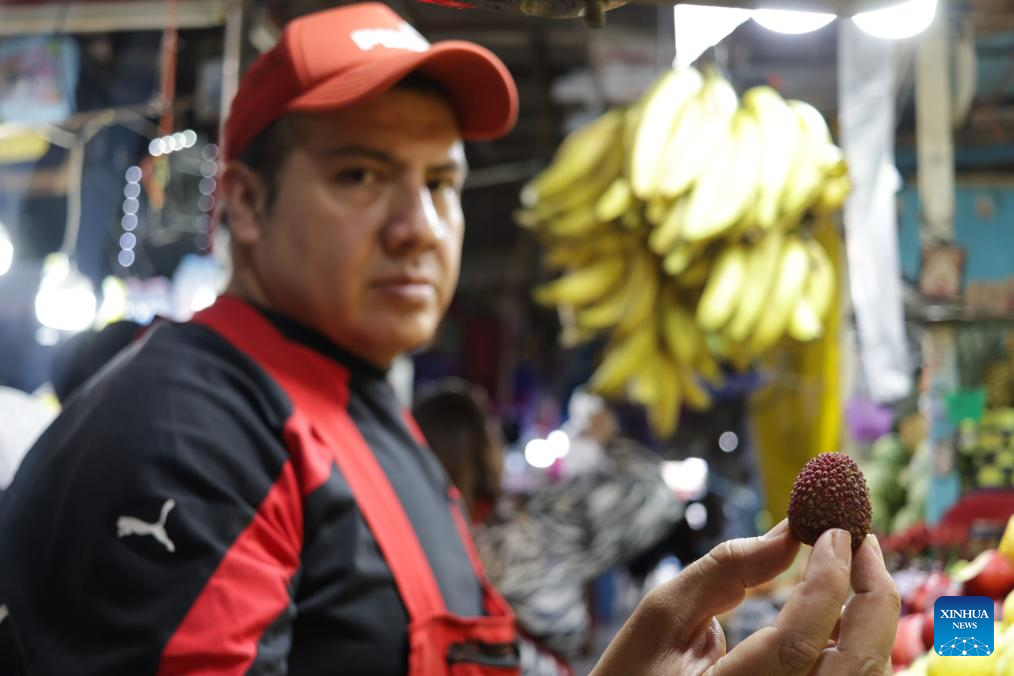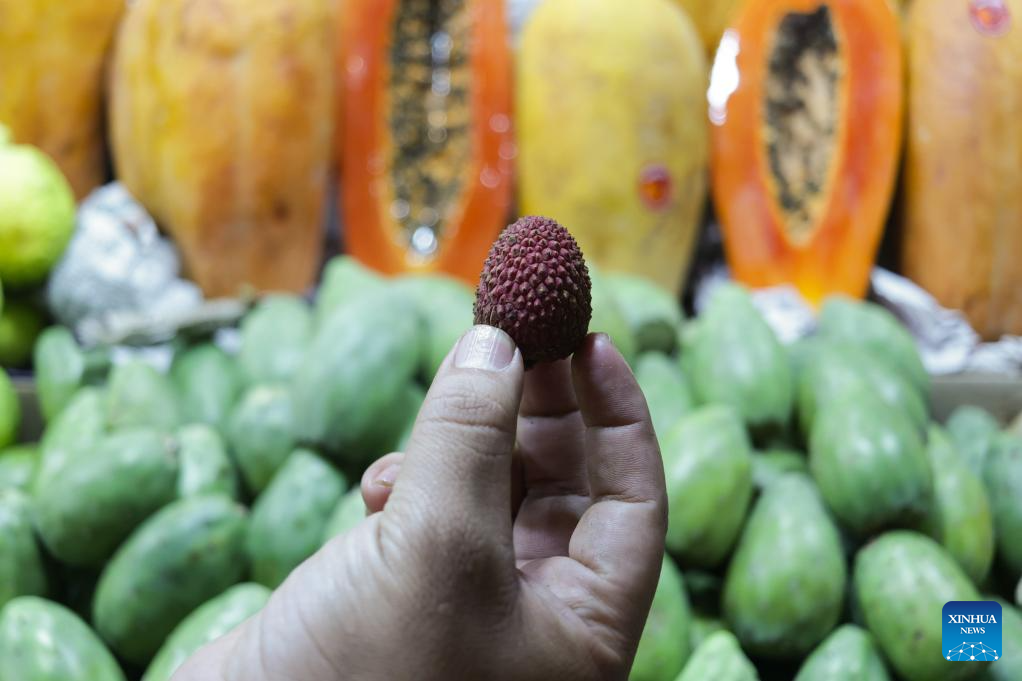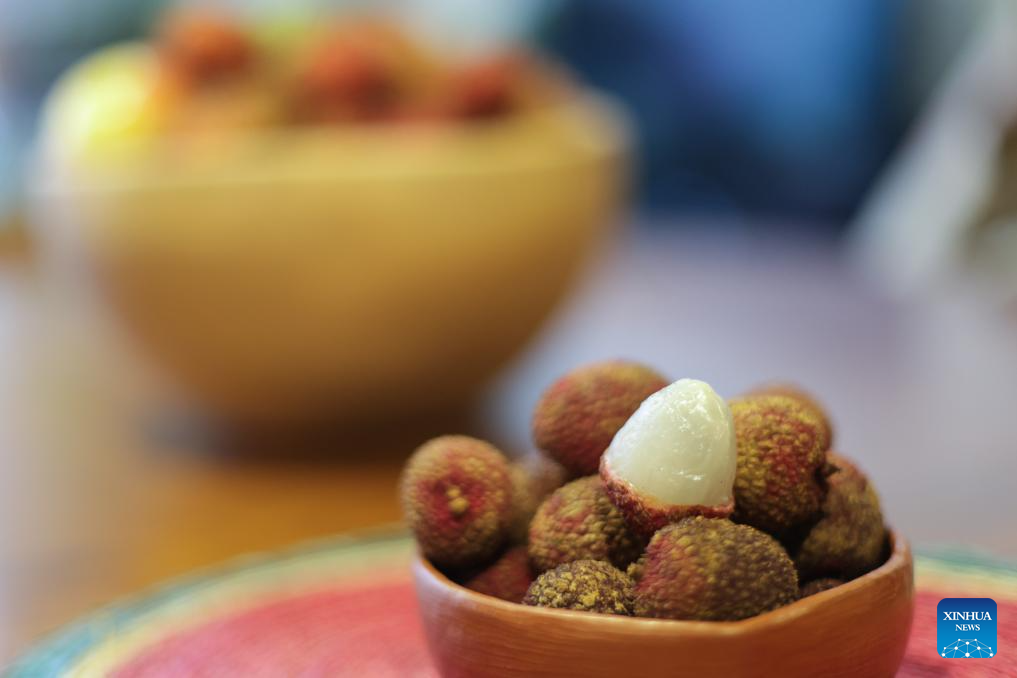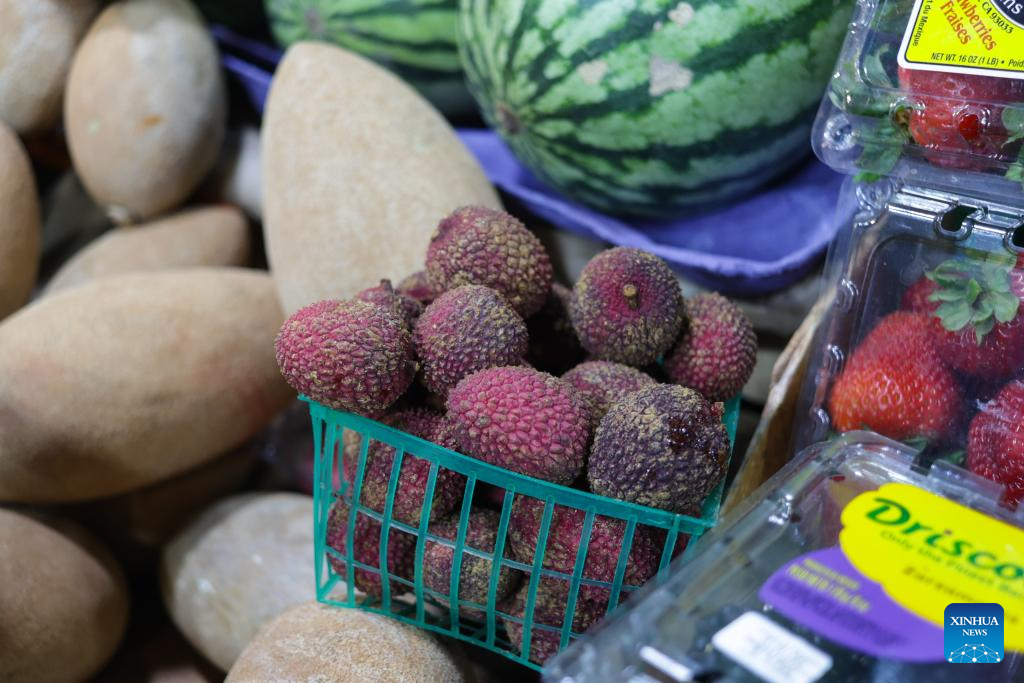
A vendor displays a lychee for sale at a market stall in Mexico City, capital of Mexico, June 24, 2025. (Photo by Francisco Canedo/Xinhua)
by Xinhua writer Tan Huiting
MEXICO CITY, June 25 (Xinhua) -- While China is going deep into summer, Mexico enters the rainy season of the year. In breaks of showery days, crowds hit the streets for sunshine and a sweet fruit from China -- lychee.
For many visitors to Mexico, lychee is something they don't expect to see here. Meanwhile, the sweet, fleshy fruit has become a popular item on Mexican households' seasonal grocery lists.
Few know that lychee trees have grown in Mexico for over a century. In the late 19th century, hundreds of Chinese workers migrated to Mexico, and many settled in Sinaloa. Local legend says the first of the lychee trees the migrants cultivated with seeds taken from their homeland was gifted to Sinaloa's governor.
In an evolution journey starting from the Chinese lychee seeds, commercial farming didn't take off until the 1970s in Mexico. After that, the seasonal fruit took no long time to find its way into the daily life of Mexicans. Liliana, a 37-year-old Mexican engineer, said: "They've always been a special treat in our home" every year since her childhood.
The lychee plantation industry in Mexico now spans 13 states, including Veracruz, Puebla and Oaxaca. In 2023, official data showed Mexico produced more than 26,000 tons of lychee fruits, largely going for the North American market.
On U.S. grocery platforms, lychee fruits command a premium price but continue to gain popularity. "Not as sweet as last year's, but still the best I can find in the U.S. market," one online reviewer wrote. "The season is short, just a few weeks. Worth savoring while it lasts."
The Mexican story of the lychee mirrors the story of migration -- of roots transplanted; of tastes carried across oceans. In markets from Los Angeles to Merida, the lychee is both about exotic appeal and homesick comfort.
"I was born and raised in Guangzhou, capital of China's Guangdong Province," said Zhang Tieliu from the Chinese American Business Association. "I later moved across the ocean for work. The U.S. doesn't grow lychees, but for us Chinese living in North America, that taste of home is something we truly miss."
And the modern lychee story overseas involves more.
"Over the years, I dreamed of bringing this jewel of South China's fruits to the American market," Zhang said.
"Thanks to breakthroughs in preservation and logistics by Chinese companies and universities, we've finally made that dream a reality -- Guangdong lychees now carry their fragrance all the way to North America."
Cold-chain technology is accelerating the lychee's global reach. Pre-cooling and freshness-locking methods have helped overcome previous barriers in its trade, facilitating its rise in sales in recent years in the international fresh fruit market. From the plantations of Maoming City, Guangdong Province, lychee fruits can now reach destinations in the Middle East and Europe within three days.
Even today, lychees in Mexican supermarkets aren't quite what a southern Chinese native remembers. They vary in size, sweetness and fleshiness. Yet spotting them on shelves is still a moment of recognition, a thread between homes, while the fruit continues to bear sweetness for generations to come.
And so, the lychee continues to bloom far from its native soil, as a living bridge between continents, past and present.
In Latin America, lychee is seen as a luxury fruit outside Mexico. In Panama, it is called "chirimoya china" to indicate its origin and exotic flavor. Brazil has thousands of hectares of lychee orchards and is still expanding its cultivation area. ■

A vendor displays a lychee for sale at a market stall in Mexico City, capital of Mexico, June 24, 2025. (Photo by Francisco Canedo/Xinhua)

Lychees are pictured in Mexico City, capital of Mexico, June 24, 2025. (Photo by Francisco Canedo/Xinhua)

Lychees are sold at a market stall in Mexico City, capital of Mexico, June 24, 2025. (Photo by Francisco Canedo/Xinhua)
